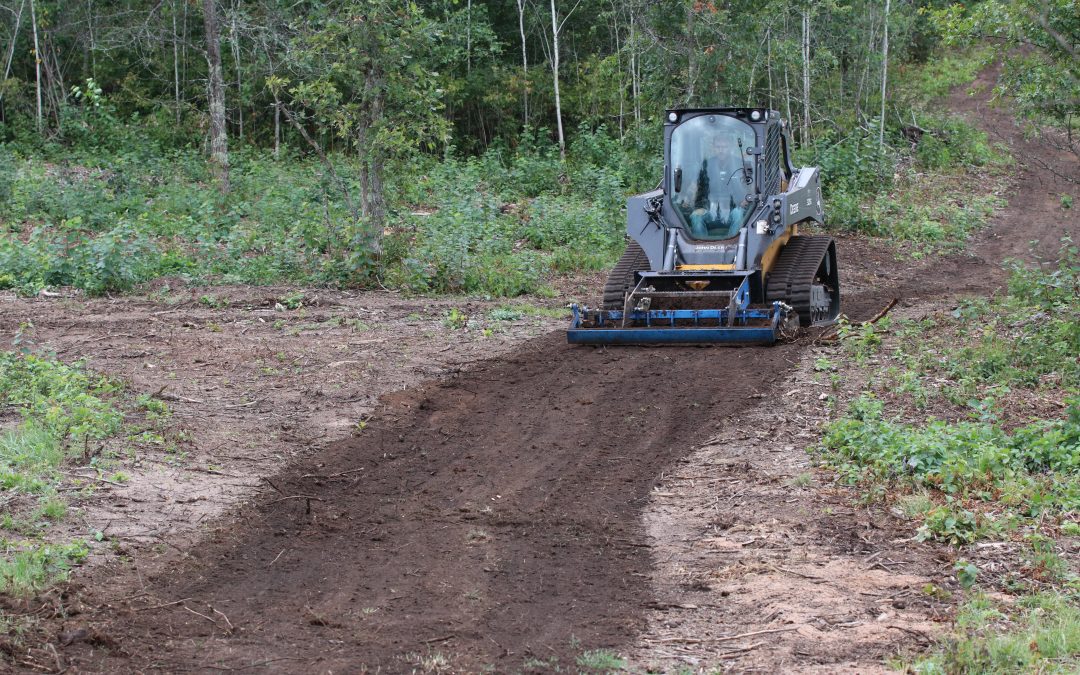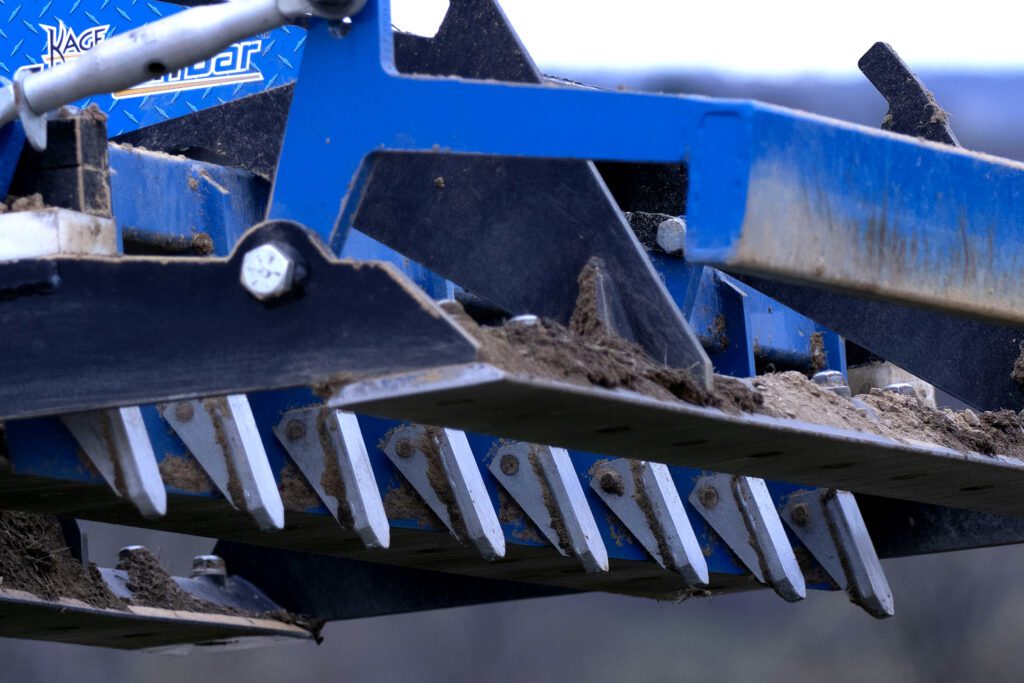If you want to establish a thick, healthy lawn or repair patches of turf, timing is everything. While spring is often seen as the prime time for planting, there’s another method that can be just as effective—dormant seeding. This technique, done late in the fall or early winter, allows grass seed to rest in the soil until conditions are right for germination in the spring.
When combined with the right soil-preparation equipment—like a land plane with rippers such as the KAGE GreatER Bar—dormant seeding becomes a smart, efficient, and highly effective strategy for achieving long-lasting turf health.
What Is Dormant Seeding?
Dormant seeding is the practice of planting grass seed during late fall or early winter when soil temperatures are too cold for germination—typically below 50°F. The seed remains inactive through the winter, then germinates as soon as the soil warms up in spring.
Because the seed is already in place, it gets a head start on the season, using early moisture from snowmelt and spring rains to establish before weeds have a chance to compete.
Benefits of Dormant Seeding
Choosing dormant seeding offers several clear advantages over waiting until spring:
- Earlier Spring Germination
Grass that has been dormant-seeded is ready to sprout at the very first signs of favorable conditions, often weeks ahead of spring-planted seed.
- Better Moisture Utilization
Dormant seed naturally benefits from snowmelt and spring rain. That consistent moisture helps seeds establish strong roots without relying heavily on irrigation.
- Time and Labor Efficiency
Late fall is typically a slower season for lawn care and landscaping professionals. Dormant seeding makes good use of this downtime to prepare turf for the upcoming growing season.
- Reduced Weed Pressure
By germinating earlier, dormant-seeded grass thickens up before weeds can establish, helping reduce the need for herbicides.
Challenges of Dormant Seeding
While dormant seeding has many benefits, there are challenges to be aware of:
- Seed Washout – Without proper soil prep, seeds can wash away during snowmelt or heavy rains.
- Poor Seed-to-Soil Contact – Grass seed left sitting on the surface will germinate unevenly.
- Compacted Soil – Compaction prevents seeds from rooting and water from penetrating.
- Wildlife Issues – Birds and small animals may eat seed left exposed on the ground.
This is why soil preparation is such a critical step—and where tools like the KAGE GreatER Bar land plane with rippers come into play.
How a Land Plane with Rippers Like the KAGE GreatER Bar Helps Dormant Seeding
A land plane is one of the most effective tools for preparing soil for dormant seeding. The KAGE GreatER Bar in particular is designed to tackle tough soil conditions and create the ideal seedbed.
Here’s how it helps:
- Breaking Up Compacted Soil
Compaction is one of the biggest barriers to successful dormant seeding. The GreatER Bar’s rippers dig into the ground, loosening hard-packed soil and opening it up for seed and water infiltration.
- Creating a Smooth, Level Seedbed
The land plane feature levels the soil, eliminating ridges and bumps. This ensures even seed distribution and prevents low spots from collecting excess water.
- Maximizing Seed-to-Soil Contact
Seeds need direct soil contact to germinate. The GreatER Bar rips and smooths the ground, creating a textured surface that allows seed to nestle securely into place.
- Improving Drainage and Water Absorption
The grooves left by the rippers allow moisture to seep into the soil instead of running off. This ensures water reaches the seed instead of washing it away.
- Preventing Erosion and Seed Loss
By breaking up the soil and creating micro-channels, the GreatER Bar helps hold seed in place during freeze-thaw cycles and spring runoff.
- Efficiency for Larger Areas
Mounted on a skid steer, the GreatER Bar makes soil preparation fast and efficient for landscapers and turf managers handling big seeding projects.
Best Practices for Dormant Seeding with the KAGE GreatER Bar
To get the most out of your dormant seeding efforts, follow these proven steps:
- Seed at the Right Time – Wait until soil temperatures are consistently below 50°F so seed won’t germinate before winter.
- Loosen and Level Soil – Use the rippers on the GreatER Bar to break up compaction, then smooth with the land plane.
- Seed Heavily – Some loss will occur due to weather and wildlife, so overseeding slightly increases success rates.
- Lightly Incorporate Seed – After spreading seed, a final pass with the land plane helps work seed into the soil surface for protection.
- Minimize Traffic – Avoid walking or driving on seeded areas during winter to prevent compaction and seed displacement.
Why Dormant Seeding Plus the KAGE GreatER Bar Is a Winning Combination
Dormant seeding works best when soil is properly prepared. The KAGE GreatER Bar land plane with rippers takes care of every major obstacle—compaction, poor seed-to-soil contact, uneven surfaces, and erosion risk.
By investing in proper preparation, you’ll set your lawn or turf project up for stronger, earlier, and more resilient growth in the spring. Whether you’re a professional landscaper or a property owner looking to maximize lawn health, combining dormant seeding with the GreatER Bar is one of the most effective strategies available.
Final Thoughts
Dormant seeding is an often-overlooked but highly effective lawn and turf management technique. By planting seed in late fall or early winter, you give grass a head start in spring—using natural moisture, reducing weed pressure, and improving establishment rates.
But success depends heavily on soil preparation. With a land plane and rippers like the KAGE GreatER Bar, you can break up compaction, level your seedbed, and ensure that dormant seed stays protected until it’s ready to grow.
If you’re planning to strengthen your lawn or overseed problem areas, now is the time to consider dormant seeding—paired with the right tools to make the job efficient and effective.




Recent Comments